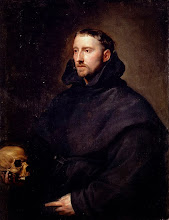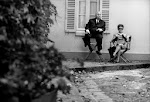Monday, April 30, 2012
Sunday, April 29, 2012
James Bond 50° Anniversary : No Deals, Mr. Bond
First row: Sardār Kamāl Khān, Aristotle "Aris" Kristatos, Sir Hugo "Hugger" Drax (Senior-Lieutenant Hugo Graf von der Drache), Auric Goldfinger, No. 5 (Colonel Tov Kronsteen), No. 2 (Emilio Largo), No. 1 (Ernst Stavro Blofeld), Dr. Julius No, No. 3 (Colonel Rosa Klebb, KGB), Donald "Red" Grant, Mr. Big (Dr. Buonapart Ignace Gallia Kananga), Francisco "Pistols" Scaramanga, Carl Stromberg
Second row: Lieutenant-General Orlov, CA, Gobinda, "The Chief" Brad Whitaker, Oddjob, Franz Sánchez, Charles Wint, Irma Bunt, Albert Kidd, Maximilian Zorin, "Tee Hee" Johnson, Baron Samedi, Nick Nack, Jaws (Zbigniew Krycsiwiki)
Third row: Elliot Carver, Renard the Fox (Victor Lavrentievič Zokas), Elektra King, Lieutenant-General Georgi Koskov, KGB, Milton "Milt" Krest, Dominic Greene, Adolph Gettler, Mr. White, Le Chiffre, May Day, Major-General Aleksei Anatolovič Gogol, KGB, The Whisper, Zao, Sir Gustav Graves (Colonel Moon Tan-sun, KPA), Ksenia Sergeevna Onatopp, Janus (Major Alexander "Alec" Trevelyan, RM, Ret.)
Un chien andalou (1929)
The idea for the film began when Luis Buñuel was working as an assistant director for Jean Epstein in France. Buñuel told Salvador Dalí at a restaurant one day about a dream in which a cloud sliced the moon in half "like a razor blade slicing through an eye".
Dalí responded that he'd dreamed about a hand crawling with ants. They were fascinated by what the psyche could create, and decided to write a script based on the concept of suppressed human emotions.
For many years (and still), published and unpublished reports have circulated that Buñuel had used a dead pig’s eye, or that of a dead sheep, or of a dead donkey, or other animal, in the notorious eyeball-slicing scene.
However, in an interview in 1975 or ’76, Buñuel claimed that he had used a dead calf’s eye. Through the use of intense lighting, Buñuel attempted to make the furred face of the animal appear as human skin.
During the bicycle scene, the woman who is sitting on a chair, reading, throws the book aside when she notices the man who has fallen. The image it shows when it lays open is a reproduction of a painting by Vermeer, whom Dalí greatly admired and often referred to in his own paintings.
In Buñuel's original script, the last shot was to feature the corpses "consumed by swarms of flies". However, this special effect was left out due to budget limitations.
Legend has it that, when they screened the film for the group of noted European artists calling themselves "surrealists," they carried sacks of rocks in their pockets on opening night as self-defense, expecting a negative response from the audience. They were disappointed when the audience enjoyed the film, making the evening "less exciting," according to Dalí. Thereafter, both Buñuel and Dalí were accepted figures in the surrealist movement.
The movie contains several thematic references to Federico García Lorca and other writers of that time. For example, the rotting donkeys are a reference to the popular children's novel Platero y yo by Juan Ramón Jiménez, which Buñuel and Dalí hated.
Both of the leading actors of the film eventually committed suicide: Batcheff overdosed on Veronal on April 13, 1932 in a hotel in Paris, and Mareuil committed self-immolation on October 24, 1954 by dousing herself in gasoline and burning herself to death in a public square in Périgueux, Dordogne.
Friday, April 27, 2012
Wednesday, April 25, 2012
Demon Seed (1977)
Demon Seed is a 1977 American science fiction–horror film starring Julie Christie and directed by Donald Cammell. The film was based on the novel of the same name by Dean Koontz, and concerns the imprisonment and forced impregnation of a woman by an artificially-intelligent computer.
Demon Seed, scripted by Robert J. Jaffe, was based on an early novel by Dean R. Koontz and concerns Susan (Julie Christie), the wife of scientist Alex (Fritz Weaver) who has been supervising the construction of a super-computer at a nearby laboratory complex.
The switching-on of the computer, called Proteus IV (smoothly voiced by Robert Vaughn), coincides with the break-up of their marriage. The marriage has failed, we learn, mainly as a result of their young daughter dying of leukemia, an event which has served to push Alex totally into his work while Susan has become increasingly distrustful of science and technology.
Proteus IV displays signs of having a mind of his own, much to the alarm of its inventor. But unlike Colossus, Proteus doesn’t want to conquer the world but to become a living, breathing part of the world. “When are you going to let me out of this box?” it asks Alex, who chooses to ignore his moral responsibilities towards his creation – instead he attempts to inhibit Proteus even further by keeping strict control on the various computer terminals open to it. But he has overlooked the terminal installed in the basement of his own house – a house that has also been fitted with a sophisticated (for 1977) electronic system called Alfred that is capable of performing a series of basic domestic tasks.
Proteus invades the house via the terminal and finds in Alfred a ready-made electronic appendage. The computer takes over the system and then reveals itself to Susan, whose first reaction is to try to escape.
As Proteus now controls the building’s automatic security system she finds there is no way out, and her subsequent attempts to outwit the machine fail completely.
Proteus finally reveals to Susan why it’s holding her prisoner – it wants her to be the mother of its child. Despite Susan’s understandable resistance,
Proteus forcibly impregnates her with its own electronically created genetic information, and she gives birth to a monstrous baby covered with what appears to be bulbous metallic scabs. Susan wants to kill it but Alex prevents her, then peels off the metallic covering to reveal a human child who is the exact replica of their dead daughter. Only when she opens her mouth and says, in Proteus’ voice, “I’m alive!” does one realise that the computer has indeed succeeded in getting out of its box, thereby fusing man with machine in a way never before achieved.
Many critics concentrated on the sado-masochistic aspects of the story at the expense of the science fiction elements, describing it as yet another rape fantasy in which a woman is exploited and degraded to provide titillation for males. That accusation may be leveled at the original novel with some justification, but the filmmakers are clearly more interested in ideas than sensationalism. The so-called sex scenes between Proteus and Susan in the film were handled tastefully but, as so often is the case, many critics based their reviews on the pre-publicity material rather than on the film itself. Demon Seed touches on many interesting concepts, such as the idea of a computer creating visual simulations on a television screen that are so realistic they resemble real people (no problem today, of course), but the film’s most successful achievement in science fiction terms is to suggest something of how a sentient computer would perceive the universe. In one impressive sequence Proteus attempts to communicate to Susan just what ‘seeing’ is like when your ‘eyes’ – radar scanners, radio telescopes, etc – are sensitive to the whole range of the electromagnetic spectrum, and you are being bombarded by an awesome sensory input.
Visually, Demon Seed is also impressive. Proteus’ tetrahedron manifestation, which ingeniously suggests a halfway point between a machine and an organic creature, is particularly well-handled in design and execution by art director Edward Carfagno and special effects man Glen Robinson.
The 2012 Forbes Fictional 15 Richest
The characters that make up this year's edition of the Forbes Fictional 15, the annual listing of fiction's richest, boast an aggregate net worth of $209.5 billion.
That's up a stunning 59% from last year --and it's enough cash to give $30 to every (real) person on the planet. To qualify for The Forbes Fictional 15, characters must be known, both within their fictional universe and by their audience, for being rich.
Net worth estimates are based on an analysis of the fictional character's source material, and where possible, valued against known real-world commodity and share price movements.
Monday, April 23, 2012
Sunday, April 22, 2012
Saturday, April 21, 2012
Friday, April 20, 2012
Thursday, April 19, 2012
Wednesday, April 18, 2012
Tuesday, April 17, 2012
Monday, April 16, 2012
Sunday, April 15, 2012
Saturday, April 14, 2012
The Shining remembered
There has been much speculation over the years about the history of the two pieces of “art” Dick Hallorann has hanging above his bed and television in The Shining.
The source for the piece above his television has finally been discovered: It is a photo taken in the early 1970’s that was sold as a poster titled “Supernatural Dream”.
The model is named Azizi Johari, and she has this to say on her Facebook page:
“It’s on the wall in Scatman Crothers room in the movie ‘The Shining’. It’s called ‘Supernatural Dream’. It freaked me out when I saw the shot in the movie! The one over the tv definitely is my poster.”
The Phobos Monolith
The Phobos monolith is a surface feature, a large rock, on the moon Phobos which orbits Mars.
It is a boulder about 85 meters (~280 feet) across.
A monolith is a geological feature consisting of a single massive piece of rock. Monoliths also occur naturally on Earth, but it has been suggested that the Phobos monolith may be a piece of impact ejecta.
The monolith is a bright object near Stickney crater, described as a "building sized" boulder, which casts a prominent shadow.
The monolith is a bright object near Stickney crater, described as a "building sized" boulder, which casts a prominent shadow.
It was discovered by Efrain Palermo, who did large surveys of Martian probe imagery, and later confirmed by Lan Fleming, an imaging sub-contractor at NASA Johnson Space Center.
The general vicinity of the monolith is a proposed landing site for a Canadian Space Agency vehicle, funded by Optech and the Mars Institute, for an unmanned mission to Phobos known as PRIME (Phobos Reconnaissance and International Mars Exploration). The PRIME mission would be composed of an orbiter and lander, and each would carry four instruments designed to study various aspects of Phobos' geology. At present, PRIME has not been funded and does not have a projected launch date.
The object appears in Mars Global Surveyor images SPS252603 and SPS255103, dated 1998. The object is unrelated to another monolith located on the surface of Mars, which NASA noted as an example of a common surface feature in that region.
Subscribe to:
Posts (Atom)










































































